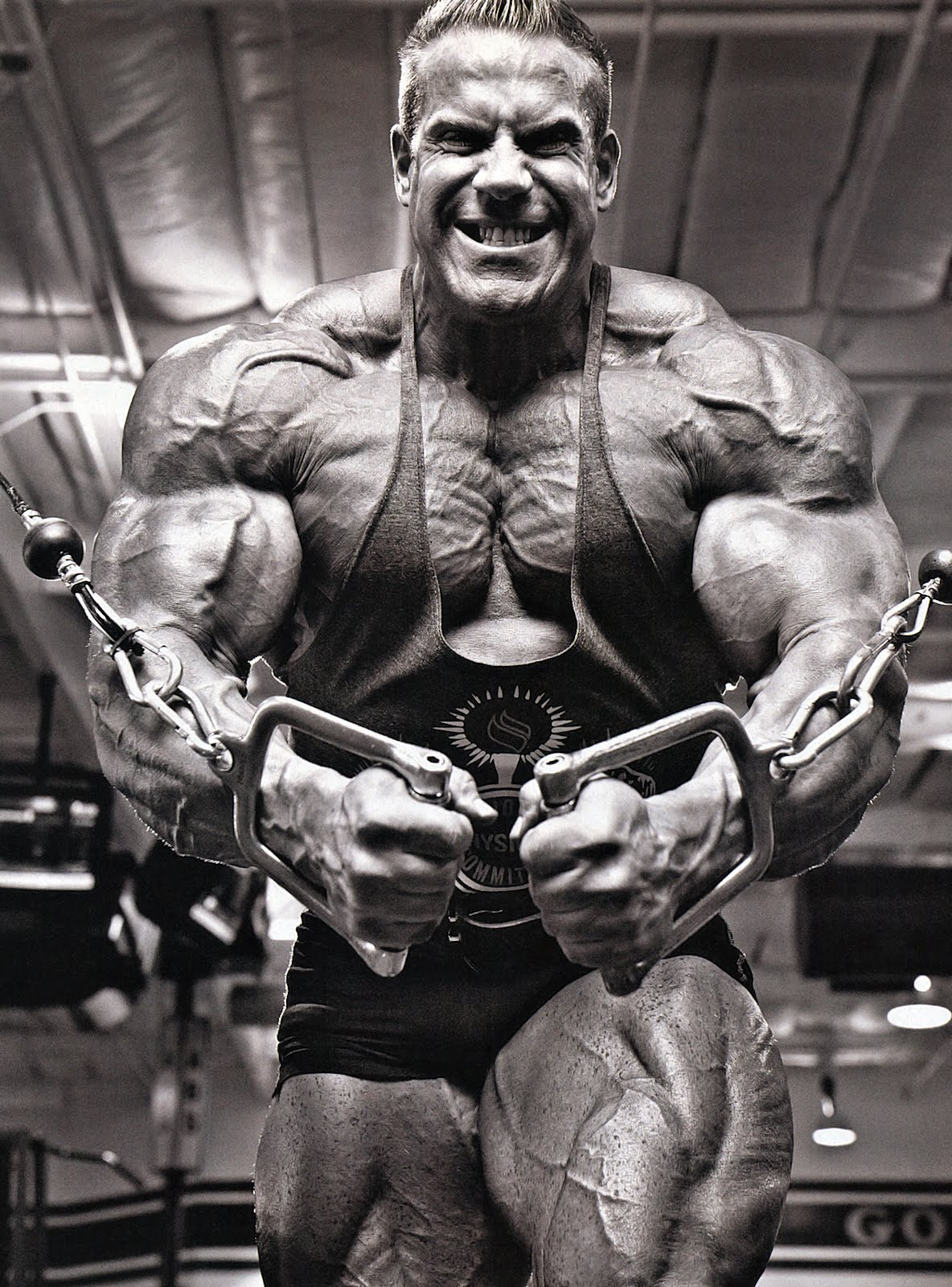How Many Rest Days Did Jay Cutler Have? Unpacking A Bodybuilding Legend's Recovery
For anyone serious about building muscle, the question of rest and recovery is, quite honestly, a big deal. It's not just about lifting heavy things; it's about giving your body the chance to grow back stronger. When we look at someone like Jay Cutler, a true titan in the world of bodybuilding with multiple Mr. Olympia titles, his training was legendary, but what about his downtime? How did a man who pushed his body to such extremes manage his rest? That's a question many folks interested in fitness and strength often ask, and it's a very good one, too.
Understanding Jay Cutler's approach to rest days is, in a way, like looking at a master artist's brushstrokes. Every part of his routine played a role in creating that incredible physique. It wasn't just the intense workouts that made him a champion; it was also the smart, strategic periods of rest that allowed his body to repair and rebuild. We're going to explore this important aspect of his journey, trying to figure out the rhythm of his recovery.
So, we'll talk about the general principles that guided his choices, how his rest might have changed depending on the time of year, and why those periods of quiet were just as important as the noisy gym sessions. It's a look at how even the strongest among us need time to recharge, and, you know, it's pretty fascinating to consider.
Table of Contents
- Who is Jay Cutler? A Quick Look at a Bodybuilding Icon
- The Core Question: Jay Cutler's Rest Day Philosophy
- The Science of Recovery: Why Rest Matters for Bodybuilders
- Beyond Just "Days Off": Jay Cutler's Holistic Approach to Recovery
- Common Questions About Jay Cutler's Training and Recovery
- The Takeaway: Applying Jay Cutler's Recovery Wisdom
Who is Jay Cutler? A Quick Look at a Bodybuilding Icon
Jay Cutler is a name that, honestly, resonates with anyone who follows bodybuilding. Born in Sterling, Massachusetts, this fellow became a professional bodybuilder who won the Mr. Olympia title four times. He took the top prize in 2006, 2007, 2009, and 2010. He was, in some ways, a dominant force for a good while.
His rivalry with Ronnie Coleman, another legend, is, you know, still talked about today. Jay was known for his incredible size, his muscle density, and a physique that was just massive. He really pushed the limits of what a bodybuilder could look like, and that's pretty clear when you see pictures of him.
He started lifting weights when he was a teenager, and it's quite something how he turned that early interest into a professional career. His dedication was, arguably, unmatched, and he inspired countless people to pursue their own fitness goals. He's, basically, a living example of what hard work and smart planning can achieve.
Jay Cutler: Personal Details & Bio Data
| Detail | Information |
|---|---|
| Full Name | Jason Isaac Cutler |
| Date of Birth | August 3, 1973 |
| Place of Birth | Sterling, Massachusetts, USA |
| Nationality | American |
| Height | Approx. 5 ft 9 in (175 cm) |
| Competition Weight | Approx. 250-270 lbs (113-122 kg) |
| Off-Season Weight | Approx. 280-310 lbs (127-141 kg) |
| Mr. Olympia Wins | 4 (2006, 2007, 2009, 2010) |
| Pro Debut | 1996 NPC Nationals |
| Retired | 2013 (from competitive bodybuilding) |
The Core Question: Jay Cutler's Rest Day Philosophy
When people ask "How many rest days did Jay Cutler have?", they're looking for a specific number, a kind of formula. The truth is, it's not always that simple with elite athletes. Their bodies are, you know, finely tuned machines that respond differently day to day. Jay's approach to rest was, in a way, dynamic, not rigidly fixed.
He didn't follow a calendar that said, "Tuesday is always a rest day, no matter what." Instead, his rest was, arguably, integrated into his overall training plan. It was a fluid part of his schedule, adjusting to how his body felt and what his goals were at that moment. This kind of flexibility is, actually, a hallmark of really smart training.
So, while there isn't a single, unchanging number of rest days he had every week for his entire career, we can certainly look at the principles he followed. His recovery was just as important as his workouts, and that's something worth remembering for anyone looking to make progress.
Understanding the "Many" in Rest Days
Trying to pinpoint the exact number of rest days Jay Cutler had throughout his career is, to be honest, a bit like trying to count every grain of sand on a beach. The meaning of "many" is, you see, consisting of or amounting to a large but indefinite number. His rest days were, in a way, numerous, but not always a precise, fixed count that he announced every week.
Jay's training was, quite frankly, incredibly intense. He often trained six days a week, sometimes with two sessions a day, especially during peak preparation times. This kind of volume means that any rest he took was, basically, crucial. It wasn't about skipping training; it was about strategic recovery.
He might have had one full day off a week, or perhaps two, depending on his program phase and how his body was, you know, feeling. But even on "rest" days, he might have done light cardio or some stretching, so it's not always a complete cessation of all activity. It's a large number of varying rest periods over time, not a static figure.
Off-Season vs. Pre-Contest Recovery
Jay Cutler's rest days, like many bodybuilders, varied significantly between his off-season and his pre-contest phases. During the off-season, when he was focused on gaining size and strength, he might have allowed for a bit more flexibility. This period was about building, and recovery is, quite simply, a huge part of that process.
He might have taken one or two full days off, or perhaps even more if his body truly needed it. The goal was to maximize growth, and overtraining can, obviously, hinder that. It's a time when the body is, you know, under less extreme stress from diet and cardio, so recovery can be a bit more forgiving.
However, as he moved closer to a contest, his training intensity would ramp up, and his diet would become very strict. During these pre-contest phases, rest days might have become, in a way, more structured, often limited to one full day off per week. The focus was on peaking, and every session counted, so recovery was, basically, managed very tightly to avoid any setbacks. It's a really different kind of stress on the body.
Listening to the Body: A Key Principle
One of the most important aspects of Jay Cutler's approach to rest, and really, to his entire training, was his ability to listen to his body. This isn't just a saying; it's, you know, a crucial skill for elite athletes. He understood that every day isn't the same, and sometimes, your body just needs a break.
If he felt overly fatigued, if his performance was dropping, or if he had persistent aches, he wouldn't just push through it blindly. He would, in fact, adjust his schedule. This might mean taking an unplanned rest day or, perhaps, doing a lighter workout. It's about being smart, not just being tough.
This principle of autoregulation, as it's sometimes called, allowed him to avoid serious overtraining and injuries. It helped him stay consistent over a very long career, which is, quite honestly, a testament to his intelligence as an athlete. He knew when to push and, just as importantly, when to pull back.
The Science of Recovery: Why Rest Matters for Bodybuilders
Rest days aren't just about being lazy; they're, actually, a vital part of the muscle-building process. When you lift weights, you create tiny tears in your muscle fibers. It's during rest that your body repairs these tears and, you know, builds the muscle back stronger and bigger. This process is called hypertrophy.
Beyond muscle repair, rest days are also crucial for your nervous system. Intense training can really tax your central nervous system, leading to fatigue and reduced performance if you don't give it time to recover. A well-rested nervous system means better strength and coordination for your next workout, which is pretty important.
Rest also helps with hormonal balance. Sleep, especially, is when your body releases growth hormone, which is, basically, essential for muscle growth and fat loss. Without enough rest, your hormone levels can get out of whack, which can, in some respects, hinder your progress. It's all connected, you see.
Finally, rest helps prevent injuries. Overtraining can weaken your tendons and ligaments, making you more susceptible to strains and tears. Giving your body a break allows these connective tissues to recover and adapt, keeping you healthy and able to train consistently. It's a really important protective measure.
Beyond Just "Days Off": Jay Cutler's Holistic Approach to Recovery
For someone like Jay Cutler, recovery wasn't just about not lifting weights. It was a comprehensive strategy that included, you know, several key components. He understood that true recovery involved more than just physical rest; it encompassed his entire lifestyle. This holistic view is, arguably, what set him apart.
He paid very close attention to everything that affected his body's ability to bounce back. This meant focusing on nutrition, making sure he got enough sleep, and sometimes, even incorporating active recovery methods. It's a complete picture, really, of how to support peak performance over time.
This broader view of recovery is, in a way, something all serious athletes can learn from. It's about creating an environment where your body can thrive and adapt to the demands you place on it. It's not just about what you do in the gym, but also what you do outside of it, too.
Nutrition as a Recovery Tool
Nutrition was, quite simply, a cornerstone of Jay Cutler's recovery strategy. He consumed, you know, a massive amount of food, but it was all very carefully planned. Protein, for instance, is absolutely essential for muscle repair and growth. He made sure he was getting plenty of high-quality protein throughout the day.
Carbohydrates were also vital. They replenish glycogen stores in the muscles, which are your body's primary fuel source during intense workouts. Without enough carbs, your energy levels would drop, and your recovery would, basically, suffer. He knew how to fuel his body for both performance and repair.
Healthy fats played a role, too, for hormone production and overall health. And, of course, supplements. While not food, they were part of his nutritional strategy to ensure he was getting every nutrient needed for optimal recovery. It's a really detailed approach to eating for results.
The Power of Sleep
Sleep is, arguably, one of the most overlooked aspects of recovery, but for Jay Cutler, it was a non-negotiable. He understood that getting enough quality sleep was just as important as his training and nutrition. It's during deep sleep that your body does a lot of its most important repair work, you know.
Growth hormone, as we talked about, is released in higher amounts during sleep, which helps with muscle repair and fat burning. Sleep also helps restore your central nervous system, making you feel fresh and ready for your next workout. Without it, you'd feel sluggish and your performance would, basically, drop off.
He aimed for, you know, ample hours of sleep each night, often emphasizing consistency in his sleep schedule. This commitment to rest allowed his body and mind to fully recharge, ensuring he could maintain his incredibly demanding training regimen. It's a pretty powerful tool for recovery.
Active Recovery and Other Methods
Even on his designated rest days, Jay Cutler might not have been completely sedentary. He sometimes incorporated active recovery, which involves light, low-intensity activity. This could be, for example, a brisk walk, some light stretching, or even a very gentle cardio session. This helps increase blood flow, which can aid in nutrient delivery and waste removal, without stressing the muscles too much.
He also likely utilized other recovery methods, like massage or foam rolling, to help with muscle soreness and flexibility. These techniques can, in a way, improve circulation and help break up knots in the muscles. It's about optimizing the environment for recovery, you see.
The mental aspect of recovery is also important. Stress can hinder physical recovery, so finding ways to relax and de-stress was, arguably, also part of his overall plan. It's a complete package, really, when you consider what it takes to perform at that level. Learn more about recovery strategies on our site, and for more insights into top athletes' routines, you can link to this page .
Common Questions About Jay Cutler's Training and Recovery
Did Jay Cutler train every day?
No, Jay Cutler did not train every single day. While his training was, admittedly, very frequent and intense, he always incorporated rest days into his schedule. Typically, he would train five or six days a week, taking one or two full days off. These rest periods were, you know, crucial for his body to recover and grow.
Even on some "rest" days, he might have engaged in light cardio or stretching, but he wasn't lifting heavy weights. The idea was to allow his muscles and nervous system to fully recuperate before the next demanding session. It's a very smart approach for avoiding overtraining and injury, too.
How long were Jay Cutler's workouts?
Jay Cutler's weight training workouts typically lasted, in a way, around 60 to 90 minutes. He believed in hitting the muscles hard and getting out of the gym before overtraining set in. He wasn't one for extremely long, drawn-out sessions, which is, basically, a common philosophy among many top bodybuilders.
He focused on intensity and efficiency, making every minute count. Sometimes, especially during pre-contest phases, he might have done two shorter sessions in a day, splitting up body parts or adding cardio. But the individual weight training sessions themselves were, you know, relatively concise, which is pretty efficient.
What was Jay Cutler's training split?
Jay Cutler used various training splits throughout his career, but a common approach involved training each major muscle group, you know, once a week, often with high volume. A typical split might look something like this: Chest on one day, Back on another, Legs on a third, and then Shoulders and Arms on separate days. He might then take a rest day or two before starting the cycle again.
He also experimented with different variations, like training body parts twice a week during certain phases, but his core philosophy leaned towards hitting each muscle group intensely and then allowing ample time for recovery before training it again. It's a very systematic way to approach muscle growth, actually. For more details on his specific routines, you can often find insights on reputable bodybuilding resources, like this one bodybuilding.com.
The Takeaway: Applying Jay Cutler's Recovery Wisdom
So, what can we take away from Jay Cutler's approach to rest days? It's clear that there isn't a single, magic number. His recovery was, in a way, as sophisticated and adaptable as his training. The exact amount of rest he took was, you know, flexible, changing with his goals, his body's signals, and the phase of his competitive year.
The real lesson is that rest is not a sign of weakness; it's a critical component of strength and growth. It's about being smart with your body, giving it the time it needs to repair, rebuild, and come back even stronger. This means listening to your own body, understanding its signals, and, basically, being willing to adjust your schedule when necessary.
Whether you're an aspiring bodybuilder or just someone looking to get fitter, prioritizing recovery, through adequate rest, good nutrition, and quality sleep, is, arguably, just as important as the effort you put into your workouts. It's about finding your own rhythm, your own "many" rest days, that work best for you. This approach, you know, can lead to much better results over time.

Jay Cutler Wallpapers - Wallpaper Cave

Jay Cutler Stats | NFL Career, Season, and Playoff Statistics

Jay Cutler - Birthday and other facts